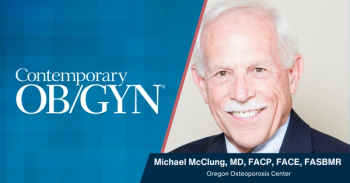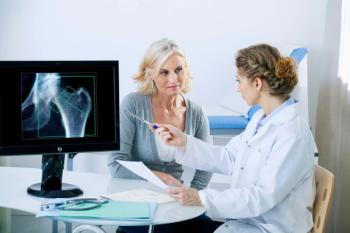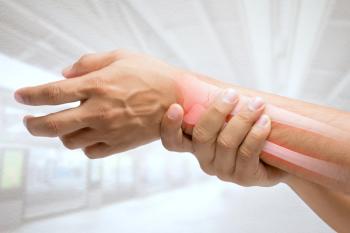
Could salivary calcium be a viable option for screening osteoporosis?
Salivary calcium might be an indicator of osteoporosis in postmenopausal women, according to a prospective study in the Journal of Oral and Maxillofacial Pathology.
Salivary calcium might be an indicator of osteoporosis in postmenopausal women, according to a prospective
Salivary calcium levels also correlated positively with
The authors noted a link between reduced estrogen levels and pathogenesis of osteoporosis in postmenopausal women. Estrogen is also known to impact salivary gland functions. An increased understanding of the influence of estrogen on salivary calcium levels over the years prompted the authors to investigate the potential significance of salivary calcium as a biomarker for osteoporosis.
Methods
For the cross-sectional study, 90 women were evenly divided into three groups. The healthy controls were aged 20 to 35, with a regular menstrual cycle and a
The pregnant group consisted of women aged 20 to 35, with a first pregnancy across all the three trimesters, but without regard to BMI. Exclusion criteria were a history of oral contraceptive use prior to conception, drug intake like HRT and calcium supplements, and tobacco use. The postmenopausal group comprised women at least 45 years old, with the onset of menopause at least 1 year prior to enrolling in the study and BMI under 30, along with two or three parturitions. Women with a history of systemic illness, drug intake, calcium supplements and tobacco use were excluded.
Serum estrogen, salivary calcium and BMD at the heel region were estimated for all study participants. Mean estrogen levels were 115.8 ± 80.18 pg/mmol in the control group, 7729.4 ± 907.6 pg/mmol in the pregnant group and 51.2 ± 74.51 pg/mmol in the postmenopausal group.
Results
The mean salivary calcium in the control, pregnant and postmenopausal groups was 3.12 ± 0.63, 3.19 ± 0.62 and 7.12 ± 0.79 μg/dL, respectively. Paired comparison within the three groups showed a high statistical significance (P = 0.0000) in salivary calcium levels.
A deficiency or a drastic fall in estrogen levels in the postmenopausal phase triggers a release of parathormone, according to the authors, which in turn actively induces calcium resorption from the skeletal system, thus increasing the serum levels of calcium, resulting in raised levels of calcium in the saliva.
The mean BMD of −2.3 in the postmenopausal group was also dramatically lower than the mean BMD of −0.6 and −0.2 in the pregnant and control groups, respectively.
Limitations
Due to the small sample size, the interrelationship that exists between the triad of serum estrogen, salivary calcium and BMD before and after menopause needs to be reexamined and validated in a larger population sample. Still, based on the findings, “salivary calcium levels can definitely indicate the possibility of the presence or absence of osteoporosis in postmenopausal women,” the authors noted, thus eventually warranted as a diagnostic marker of osteoporosis on a routine basis.
Conclusions
Estimating salivary calcium levels is a comparatively easy, safe, inexpensive and noninvasive. It holds promise for osteoporosis screening, according to the authors, but more data are needed before it can be recommended as an alternative to serum or urinary calcium estimation and radiographic aids.
Newsletter
Get the latest clinical updates, case studies, and expert commentary in obstetric and gynecologic care. Sign up now to stay informed.



